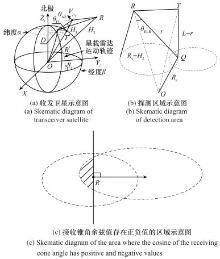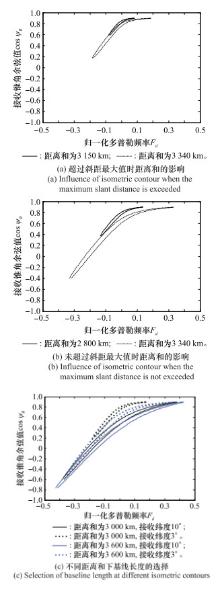| 1 |
SIKANETA I , GIERULL C H , CERUTTI-MAORI D . Optimum signal processing for multichannel SAR: with application to high-resolution wide-swath imaging[J]. IEEE Trans.on Geoscience and Remote Sensing, 2014, 52 (10): 6095- 6109.
doi: 10.1109/TGRS.2013.2294940
|
| 2 |
邓云凯, 禹卫东, 张衡, 等. 未来星载SAR技术发展趋势[J]. 雷达学报, 2020, 9 (1): 1- 33.
|
|
DENG Y K , YU W D , ZHANG H , et al. Forthcoming spaceborne SAR development[J]. Journal of Radars, 2020, 9 (1): 1- 33.
|
| 3 |
JAYARAMAN V, DASH D, JENA D. Optimal coverage area analysis for target localization in multistatic radar[C]//Proc. of the International Conference on Applied Electromagnetics, Signal Processing and Communication, 2018: 1-5.
|
| 4 |
XU H J , YANG Z W , TIAN M , et al. An extended moving target detection approach for high-resolution multichannel SAR-GMTI systems based on enhanced shadow-aided decision[J]. IEEE Trans.on Geoscience and Remote Sensing, 2018, 56 (2): 715- 729.
doi: 10.1109/TGRS.2017.2754098
|
| 5 |
ZHANG F R , SUN Y M , ZOU J F , et al. Closed-form localization method for moving target in passive multistatic radar network[J]. IEEE Sensors Journal, 2020, 20 (2): 980- 990.
doi: 10.1109/JSEN.2019.2944957
|
| 6 |
HAMDOLLAHZADEH M , AMIRI R , BEHNIA F . Moving target localization in bistatic forward scatter radars: performance study and efficient estimators[J]. IEEE Trans.on Aerospace and Electronic Systems, 2020, 56 (2): 1582- 1594.
doi: 10.1109/TAES.2019.2934007
|
| 7 |
VARADARAJAN V , KROLIK J L . Joint space-time interpolation for distorted linear and bistatic array geometries[J]. IEEE Trans.on Signal Processing, 2006, 54 (3): 848- 860.
doi: 10.1109/TSP.2005.862941
|
| 8 |
ZHANG S X , XING M D , XIA X G , et al. Robust clutter suppression and moving target imaging approach for multichannel in azimuth high-resolution and wide-swath synthetic aperture radar[J]. IEEE Trans.on Geoscience and Remote Sensing, 2015, 53 (2): 687- 709.
doi: 10.1109/TGRS.2014.2327031
|
| 9 |
李华, 汤俊, 彭应宁. 星载双基地雷达空时二维杂波建模方法[J]. 电子学报, 2008, 36 (3): 417- 420.
|
|
LI H , TANG J , PENG Y N . Modeling of space-time clutter for bistatic space based radar[J]. Acta Electronica Sinica, 2008, 36 (3): 417- 420.
|
| 10 |
刘楠, 张林让, 易予生, 等. 星载双基地雷达空时二维杂波建模和特性分析[J]. 西安电子科技大学学报(自然科学版), 2009, 36 (3): 390- 395.
|
|
LIU N , ZHANG L R , YI Y S , et al. Clutter modeling and analysis for spaceborne bistatic radar[J]. Journal of Xidian University (Natural Science), 2009, 36 (3): 390- 395.
|
| 11 |
MAMGAIN R, BAPAT J. Comparative analysis of geometry of receiver placement in multistatic radar configuration[C]//Proc. of the IEEE International Conference on Electronics, Computing and Communication Technologies, 2020: 1-6.
|
| 12 |
李海鹏, 冯大政, 周永伟. 多基地雷达栅栏覆盖的优化布站方法[J]. 西安电子科技大学学报, 2021, 48 (2): 147- 155.
|
|
LI H P , FENG D Z , ZHOU Y W . Optimum placement method of multistatic radar barrier coverage[J]. Journal of Xidian University (Natural Science), 2021, 48 (2): 147- 155.
|
| 13 |
李修和, 陈永光, 张艳艳, 等. 不同干扰决策准则下的双基地雷达探测能力研究[J]. 电子学报, 2004, 32 (12): 2063- 2066.
|
|
LI X H , CHEN Y G , ZHANG Y Y , et al. Detecting capability of bistatic radar under different jamming decision criterion[J]. Acta Electronica Sinica, 2004, 32 (12): 2063- 2066.
|
| 14 |
ZULCH P, DAVIS M, ADZIMA I. The earth rotation effect on a LEO L-band GMTI SBR and mitigation strategies[C]//Proc. of the IEEE Radar Conference, 2004: 27-32.
|
| 15 |
卫国宁, 骆剑, 康志宇, 等. 一种星下点精确重访约束下的轨道设计方法[J]. 中国空间科学技术, 2016, 36 (4): 67- 73.
|
|
WEI G N , LUO J , KANG Z Y , et al. A method of orbit design based on precise revisit of a given ground track[J]. Chinese Space Science and Technology, 2016, 36 (4): 67- 73.
|
| 16 |
ABDELKHALIK O . Initial orbit design from ground track points[J]. Journal of Spacecraft and Rockets, 2010, 47 (1): 202- 205.
|











